14 Most Attractive Places On Samoeng Loop (2024)
Samoeng, a captivating district nestled within the Chiang Mai Province of Northern Thailand, offers visitors a perfect blend of lush landscapes and authentic Thai culture. This hidden gem, characterized by its sweeping mountain vistas and verdant forests, is home to welcoming communities and a thriving agricultural scene. From the enchanting strawberry farms to the alluring Samoeng Loop, a popular motorcycling route, Samoeng entices travelers with a diverse range of experiences. Whether you’re seeking outdoor adventures or a peaceful retreat amidst nature, Samoeng’s breathtaking beauty and rich cultural tapestry create an unforgettable escape for those looking to explore the lesser-known wonders of Thailand.
The Samoeng loop, like most routes in Northern Thailand, starts and ends in Chiang Mai and takes you around Doi Suthep and through the Samoeng forest. Located west-northwest of Chiang Mai, this loop offers plenty of experiences for travelers who want to spend their day exciting.
The traveler on this Chiang Mai loop will be left with an authentic taste of Thailand’s nature, animal kingdom, and cultural heritage. Travelers tend to use motorcycles for this journey as it is about 100km and is the easiest way to get around, plus it typically takes about a day to finish the Samoeng Loop and the Mae Sae Valley.
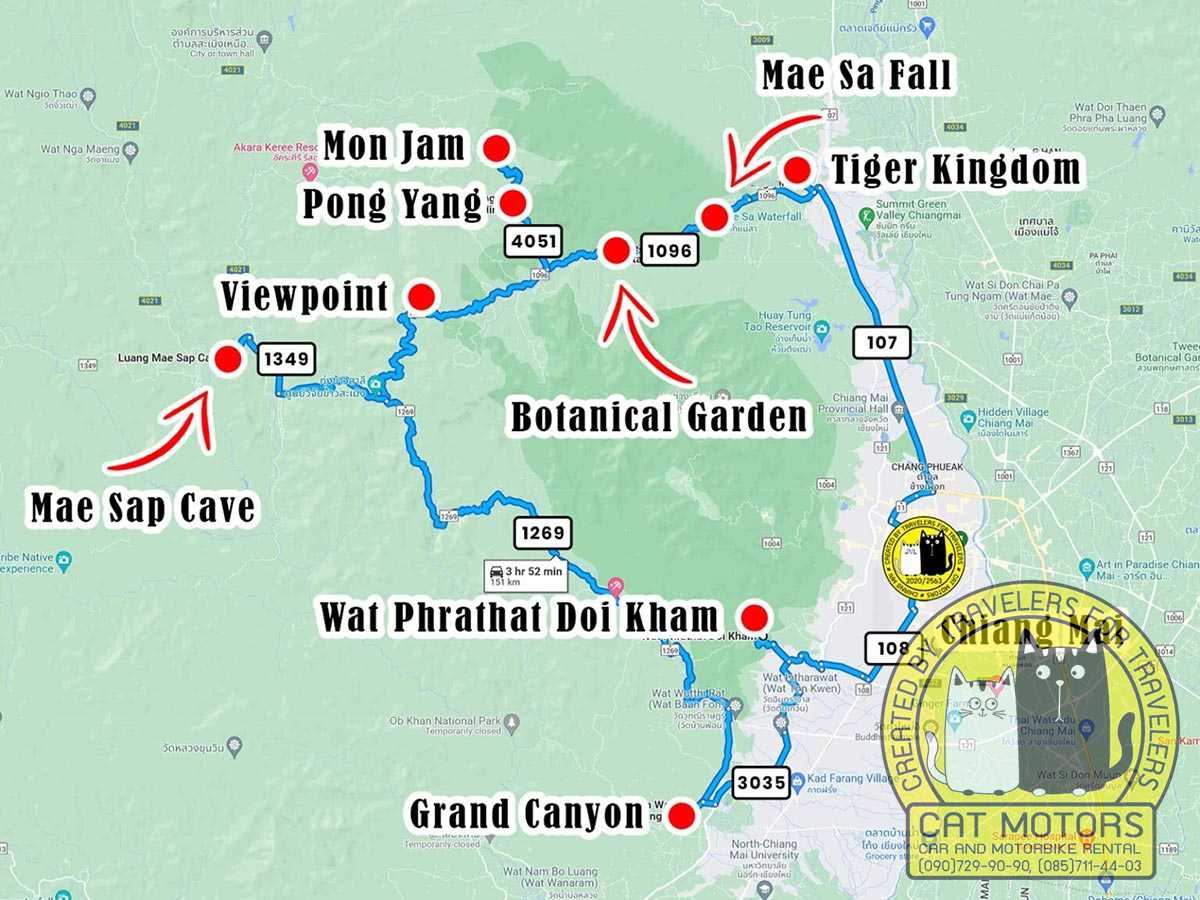
If you are interested in a multi-days trip, then check out Mae Hong Son Loop or Chiang Rai travel guides.
Points of Interest
Tiger Kingdom
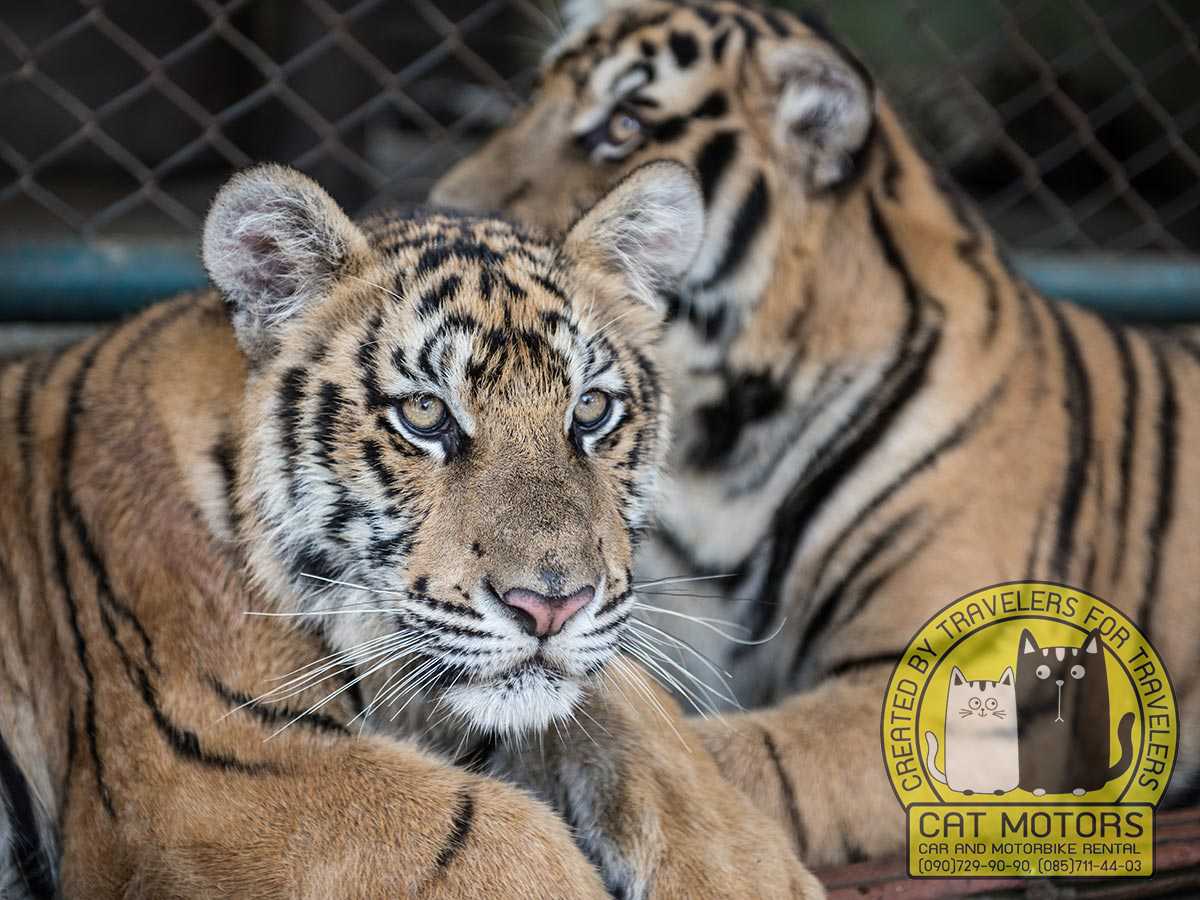
The first stop along the Samoeng Loop is the Tiger Kingdom in Chiang Mai! The first Tiger Kingdom branch being located in Chiang Mai and the second branch located in Phuket. The zoo was started in 2008 when an Australian traveler asked to be closer to the big cats and since then, the site has become a safe place where travelers can go and interact with the big cats of the animal kingdom. Depending on how brave the traveler is, there are different ticketed prices depending on the size of the cat the traveler would like to interact with.
Another interesting part of the Tiger Kingdom is that they conduct classes, seminars, and lectures that are open to tourists and locals that talk about understanding their needs and their importance in the animal kingdom. A lot of the tourists can also pay to take close up photographs with the tigers, but depending on the age and size of the tiger, the price and time slot varies.
Mae Sa Valley

Mae Sa Valley is the only road that connects Chiang Mai with the town of Samoeng. The valley is one of the key attractions along this route, as it is heavily forested and offers the most spectacular views of the surrounding rice fields. The valley is a paradise for those who love being at one with nature and enjoy staying among the greenery.
The Mae Sa Valley is home to the Queen Sirikit Botanical Garden, hot springs, and one of the world’s largest elephant camps, Mae Sa Elephant camp, which many tourists visit yearly. Besides its outstanding beauty, the valley is famous for adventure sports, including quad biking, rafting on bamboo rivers, etc.
But the most delightful thing is the unforgettable and great views of the surrounding area, which will accompany you throughout your day trip.
By the way, did you read our article about the best Muay Thai gyms in Chiang Mai?
Mae Sa Waterfalls

The Mae Sa Waterfall is one of Northern Thailand’s treasures. It is an impressive ten-step waterfall that covers a very large area. The waterfall is set in the rain-forest and is a little walk away from the main roads of Mae Sa Valley.
The Mae Sa Waterfall is one of the most visited waterfalls in Chiang Mai province and is supposedly one of the prettiest too! Being about a twenty-minute drive from Chiang Mai it’s not visible from the main road, but there are many signposts that show you the way to the waterfall. There is a well laid out path that will take you right up to the top of the waterfall and it also has many treks in and around it.
At the foot of the waterfall there are some pools that you can swim in, but be warned that this waterfall is very popular and can get pretty crowded during the high season. To get away from the crowd, however, you can trek up to the fifth or sixth level of the waterfall where you find find less people.
Entrance fee
Children – 50THB
Adult – 100 THB
For vehicle
Bicycle – Free
Motorbike – 20 THB
4 Wheels Car – 30 THB
6 Wheels Car – 100 THB
Over 6 Wheels – 200 THB
Over 10 Wheels – not allowed
Working hours
Daily from 8:30 a.m. to 4:30 p.m.
Queen Sirikit Botanical Garden
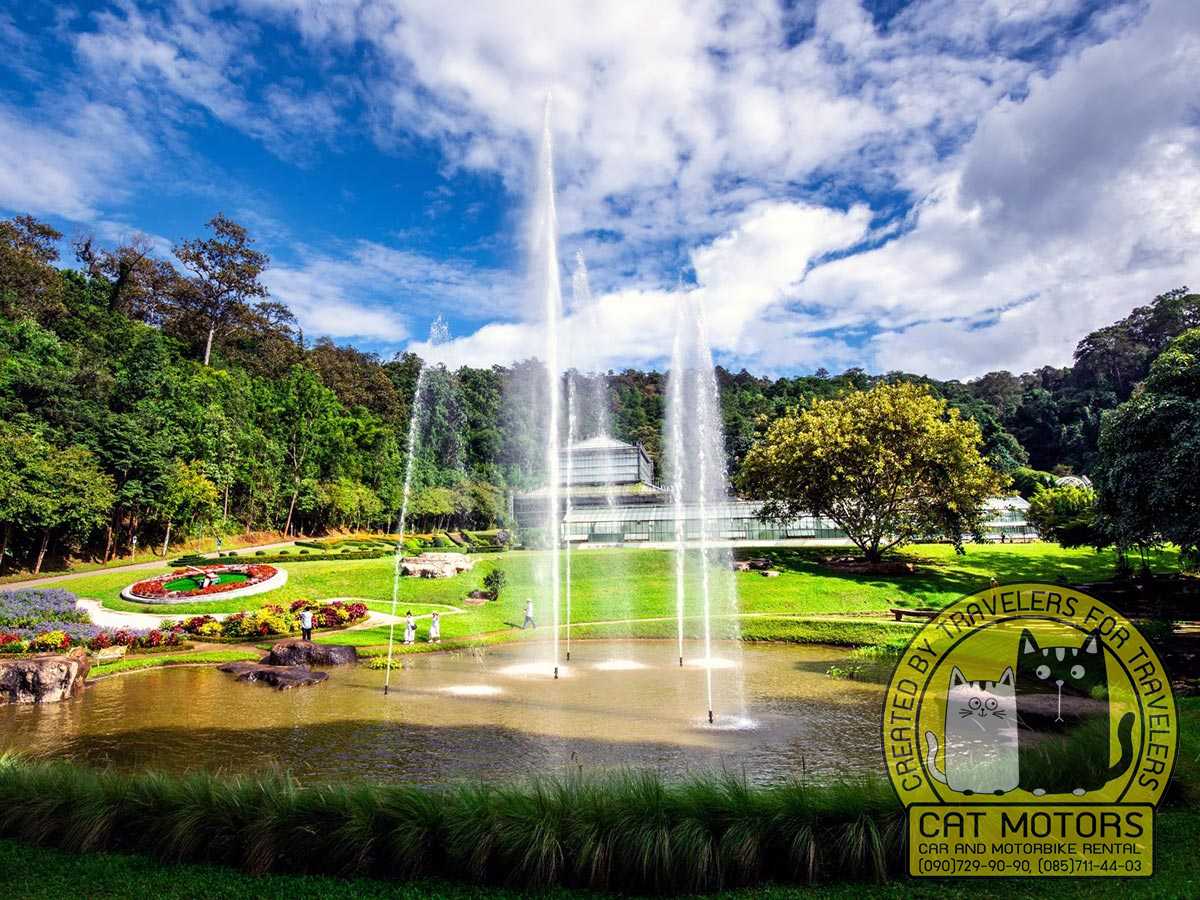
The Queen Sirikit Botanical Garden was first opened in 1993 and is located in the Mae Rim Region. The Mae Rim Region borders the Doi Suthep-Pui National Park of which much of the botanical garden lies within. Anyone who appreciates horticulture must visit the site along the loop and Samoeng town.
The Garden was named after Queen Sirikit herself for having such a fond interest in flowering plants. It hosts an assortment of unique flora and fauna species indigenous to Thailand. The area of the Queen Sirikit Garden is used for scientific experiments and conservation, plus, it’s also part of the Royal Project to help farmers and planters find alternatives to the usual crop of the area.
QSBG Tourist Map
Click on a map of the Queen Sirikit Botanical Gardens and it will open in high resolution in a new window.
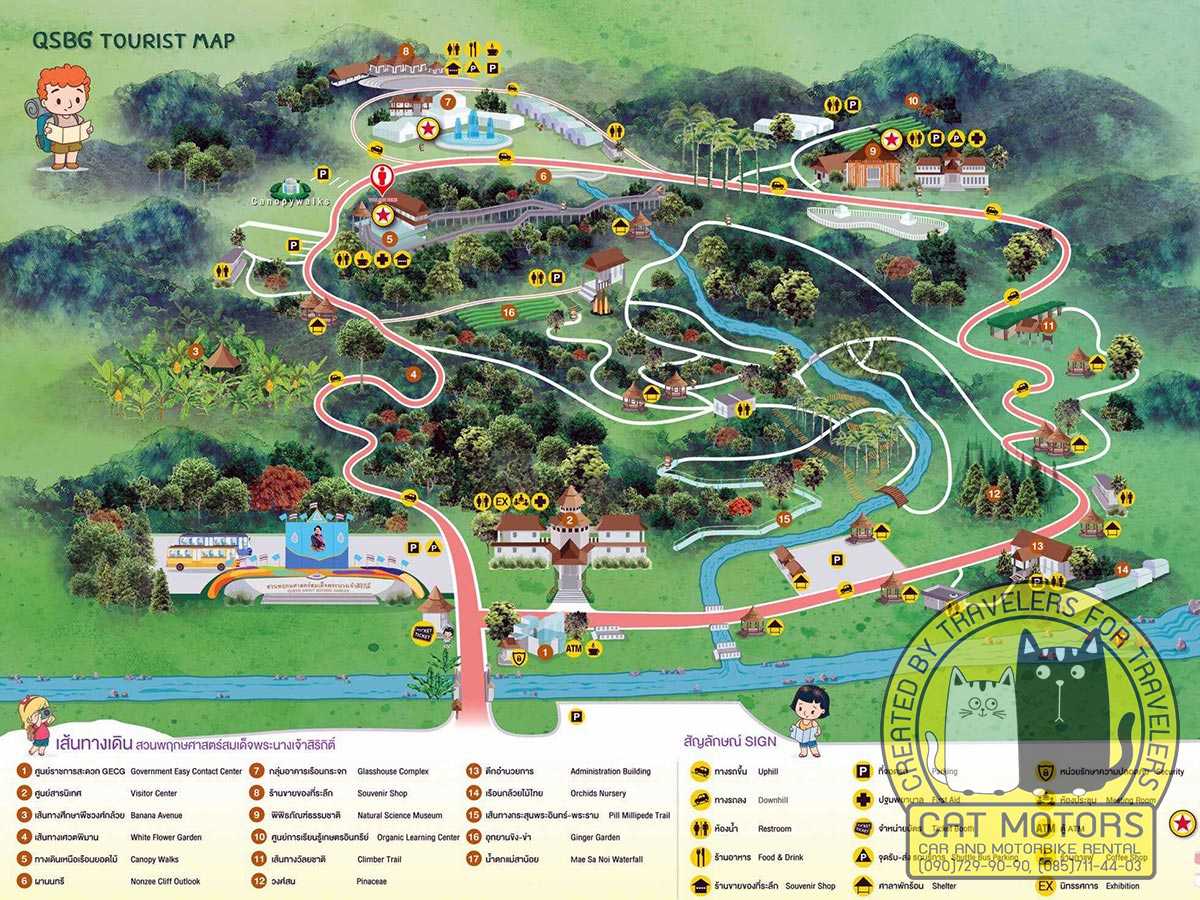
Entrance fee
Children – 50 THB
Adult – 100 THB
Over 60 y.o. – free
Under 12 y.o. – free
Vehicle fee
Motorbike – 30 THB
Car – 100 THB
Hours
Tuesday through Sunday, 8:30 a.m. to 5:00 p.m.
Monday off
Mon Jam Camp + Viewpoint
Mon Jam is a place with a magnificent panoramic view that opens from a hilly ridge, which is located a little away from the main route. This place on the Samoeng Loop is very popular with local tourists, especially at weekends.
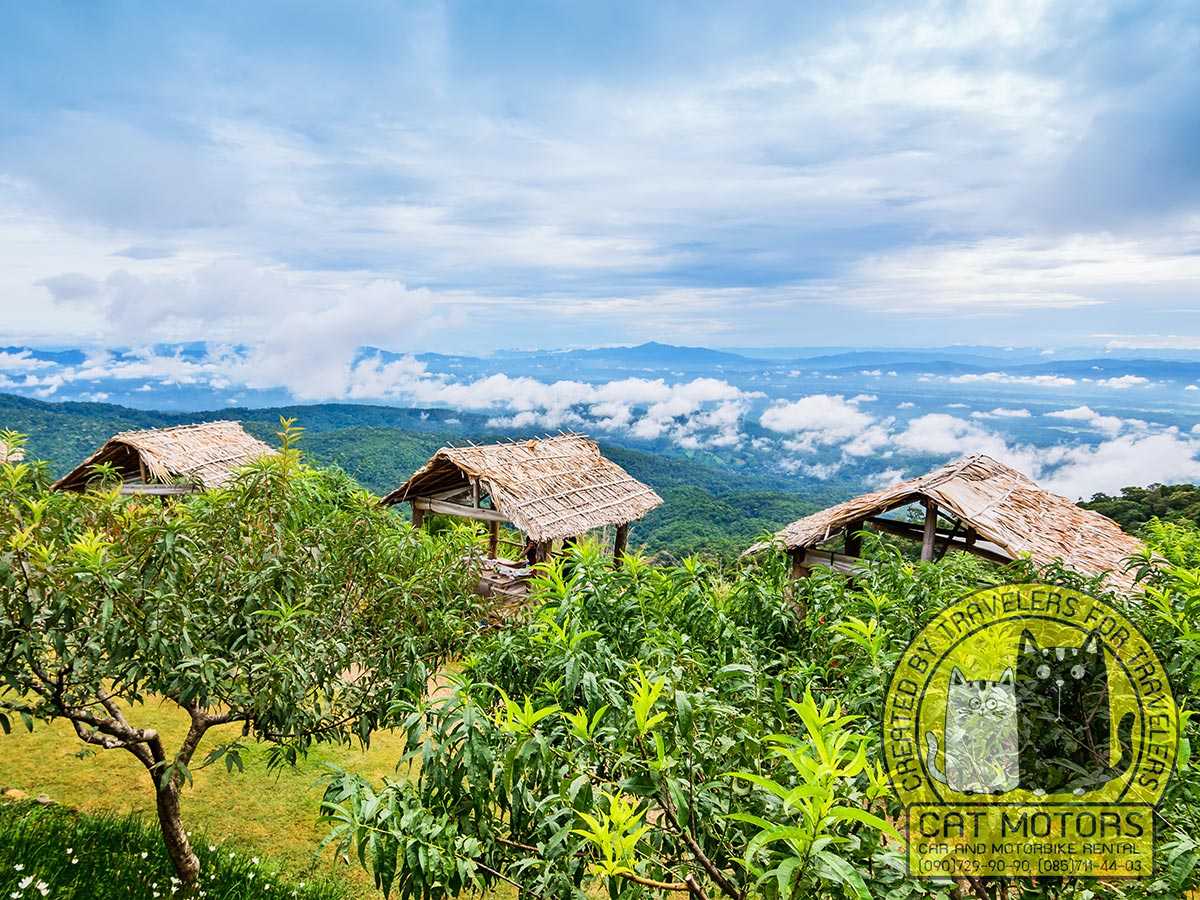
Be prepared for the fact that in this place you will find many souvenir shops, but you won’t be able to eat or buy a bottle of water here since the cafe located on the top of the mountain range works according to an unknown schedule. The number of tourists does not matter. For example, one day I arrived here at noon. There were around 60-70 tourists at the place, but on a sign hanging on a bamboo door it was written: Today we will open at 5 pm.
Forest Viewpoint

The Samoeng Forest viewpoint is located at a high point between two mountains, and from the viewpoint, there is a beautiful view of the forest cascading off the mountainsides. It offers the best views during the Thai rainy season along with birds-eye views of the forest, which makes it an amazing place to take envy-worthy pictures. There is a couple of local food-bike near the viewpoint. A nice place to take a break before finishing the rest of your journey.
Mae Sap Cave
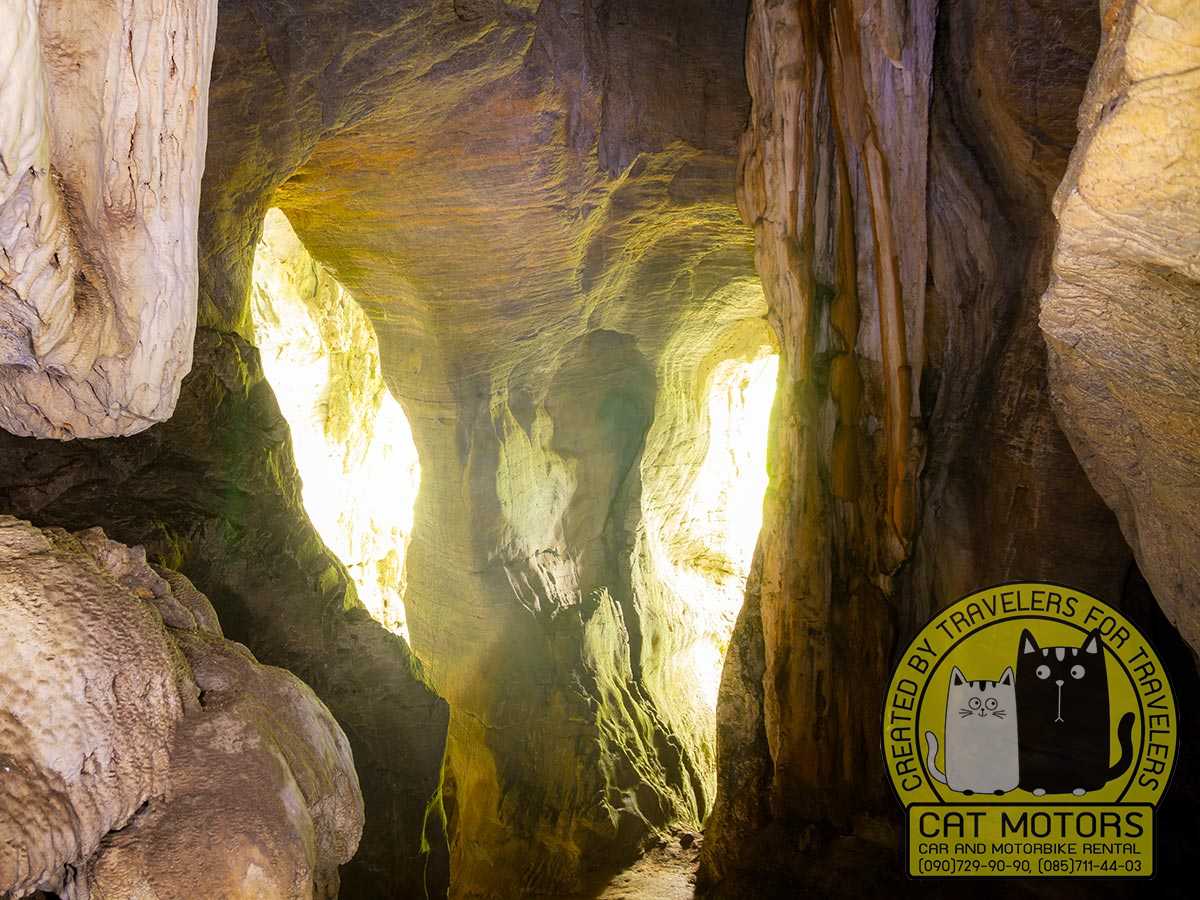
Thailand, especially its northern regions, is known for its many caves and cavities. Mae Sap Cave is another place in the long list that Thailand has to offer to speleologists and cave lovers. This unique network of caves is located in Khun Khan National Park in Samoeng district.
The caves have a large number of stalactite and stalagmite formations inside that reflect from the light through the day that the cave is colored in a pristine blue hue. These formations make for many very interesting pictures.
Keep in mind that it is very easy to get lost in cave networks and it is always a good idea to go in groups or with a guide. Make sure that you are wearing appropriate footwear while venturing into parts of the cave.
Wat Phra That Doi Kham

The Wat Phra That Doi Kham has a central stupa that is 17 meters high, made of gold which includes a large number of intricate carvings on it all of which being surrounded by a couple of brown roofed structures known as meditation halls. The biggest attraction of the Temple is the sitting Buddha statue at the entrance, while also boasting other smaller statues in front of it, each one being an exquisite work of art. The temple is lesser known amongst tourists which makes it quite peaceful. This temple, like most temples in Thailand, is situated on a hillock and provides a beautiful view of the surrounding areas.
While making a trip to the temple make sure that you are modestly dressed and covered as this is a place of pilgrimage and is one of Thailand’s most sacred sites for Buddhism.
Also check out the other interesting attractions nearby, which we have detailed in our Places to Visit in Chiang Mai travel guide.
Samoeng Loop POI Map
Download a PDF with coordinates on a Google map, with listed places to stop.
Weather Forecast
Quick Facts About Samoeng Loop
1. Geography and Climate
- Location: Northern Thailand, near Chiang Mai
- Length: Approximately 100 kilometers
- Terrain: Mountains and valleys
- Climate: Tropical, ideal travel period from November to February
2. Cultural Significance
- The Samoeng Loop is a window into Northern Thai culture, showcasing hill tribes like the Hmong and Karen, known for their unique traditions and crafts.
3. Major Features
- Strawberry Farms: Famous for its strawberry farms offering fresh picks and homemade products.
- Elephant Sanctuaries: Ethical sanctuaries provide responsible interactions with elephants.
- Hill Tribe Villages: Insight into the lifestyles and traditions of local hill tribes.
- Wat Phra That Doi Suthep: A culturally significant temple offering panoramic views, located nearby.
4. Activities
- Motorbike Tours: The preferred mode of exploration, offering an exhilarating experience.
- Hiking and Trekking: Trails through diverse ecological zones, suitable for all levels.
- Camping: Opportunities to connect with nature.
5. Culinary Experiences
- Local Cuisine: Highlights include Khao Soi (curry noodle soup) and Sai Oua (Northern Thai sausage).
- Dining Options: From street food to fine dining, a range of culinary delights await.
6. Accommodation
- Types: From budget-friendly guesthouses to luxurious resorts.
- Location: Available along the loop and in nearby areas.
7. Sustainable Tourism
- Focus on preserving local cultures, respecting the environment, and supporting local businesses.
8. Transportation Options
8.1. Bike Renting:
- Ideal for Adventure Seekers: Renting a motorbike is a popular choice for exploring the Samoeng Loop, offering flexibility and an immersive experience.
- Safety Tips: Ensure you have appropriate travel insurance and are comfortable with riding on mountainous roads. Always wear a helmet and carry a map or GPS device.
8.2. Car Rental:
- Comfort and Convenience: For those who prefer a more comfortable journey or are traveling in groups, renting a car is a great option.
- Choosing a Rental Platform: These platforms offer a variety of vehicles, from compact cars to SUVs, suitable for the varying road conditions of the loop.
- Booking Advice: It’s advisable to book your vehicle in advance, especially during peak tourist seasons. Check for rental inclusions such as insurance, mileage, and emergency support.
Video Review
Watch a short video review from our customers Daneger and Stacey. A wonderful trip, despite the slightly rainy weather. By the way, in case of rainy weather, we always give our customers free rain poncho.
FAQ
You can travel to Samoeng from Chiang Mai on your own by renting a motorbike from our company. If you prefer to travel by car, in that case we recommend you to use EconomyBookings and RentalCars websites to find the best car rental rates among all the major Chiang Mai rentals.
Sure, the Samoeng Loop is definitely worth a visit. It is a scenic drive through the countryside of northern Thailand, with stunning views of the mountains and lush green valleys. The loop is also home to several small villages, where you can experience the local culture and cuisine.
The best time to ride the Samoeng Loop is during the dry season, which runs from late October to February. During this time, the roads are in the best condition and the weather is usually sunny and dry.
The length of the Samoeng loop is about 150 kilometers. Together with sightseeing, rest, breakfast, and lunch, you can cover it in about 6-8 hours if you take your time.
Even though it’s a day trip, you’ll find a variety of activities there. Tiger Zoo, caves, botanical gardens, waterfalls, view points with spectacular mountain views, an ancient temple, and also Grand Canyon water park. In addition to the attractions listed in our guidebook, you will also find dozens of other places to visit. But we have listed the main ones.
If you are riding a motorcycle, it is recommended to go clockwise, because you don’t have to worry too much about the condition of the road and its steepness. But if you are going to ride your bicycle through the loop, it is better to ride counterclockwise, because you will pass the steep sections first.
The best time to visit Chiang Mai, and hence the Samoeng Loop, is during the cool season, from November to February. The weather is cooler and drier, making it ideal for outdoor activities. However, remember that it’s also high tourist season, so it might be more crowded.
The Samoeng Loop is about 100 kilometers long. If you just drive straight through, it might take 3-4 hours, but with stops at attractions, it can take a full day. The preferred mode of transport is by motorbike or scooter, as it gives you the flexibility to stop and go as you please. There are also car rental options and guided tour buses available.
Some popular sights include the Mae Sa Waterfall, the Queen Sirikit Botanic Garden, Mon Cham viewpoint, and the numerous strawberry farms along the route. There’s also the opportunity to visit local hill tribes.
Absolutely, the route is peppered with local eateries and roadside stalls. A couple of popular spots include Baan Mon Muan for local Thai food with a view and some of the strawberry farms where you can enjoy fresh strawberry dishes.
Yes, there are many hiking trails near the Loop, especially around the Mae Sa Waterfall and the Queen Sirikit Botanic Garden. There are also ziplining and elephant camps for the more adventurous.
Mon Cham viewpoint, with its panoramic view, is a favorite among photographers, especially at sunrise and sunset. The Queen Sirikit Botanic Garden also provides beautiful scenery and plant life for photography.
Within the lush forests, you might spot diverse bird species and perhaps some smaller mammals. The plant life is vibrant and diverse, especially within the Queen Sirikit Botanic Garden.
While the Samoeng Loop itself is more about natural beauty, there are hill tribe villages that offer cultural experiences. They are living testimonials to the region’s cultural heritage.
If you’re driving, ensure you have the right international permit and that you’re comfortable driving in Thai traffic. Carry water, sunblock, and a map or a charged phone with GPS. Be respectful to wildlife and follow guidance at nature spots.
There are local markets in the villages along the loop where you can buy handicrafts, local products, and fresh produce. The strawberry farms often have goods like fresh strawberries and homemade strawberry jam.
There are several rest stops along the loop that have restrooms, food vendors, and small shops. Most larger attractions like the Queen Sirikit Botanic Garden and Mae Sa Waterfall have their own facilities as well.
Yes, there are guided tours available, which can be booked through travel agencies in Chiang Mai or online. They often include transport, a guide, and sometimes meals and entrance fees to the main attractions.
Feel free to ask us if you need a bike rental in Chiang Mai for your Samoeng Loop trip. In addition, for independent travelers exploring Northern Thailand, we have created online guides about attractions in our region. Finally, don’t forget to read our guide on safe driving in Thailand.
If you prefer to rent a car, including the option to return the rental car to a rental location in another city, we recommend that you compare car rental rates in Chiang Mai. Prices may differ by half or more.
Cat Motors Team
Was this post useful for you?
You can rate it by clicking on a star
Average rating / 5. Vote count:
No votes so far! Be the first to rate this post.
We are sorry that this post was not useful for you!
Let us improve this post!
Tell us how we can improve this post?
- Author: Cat Motors Team
- Posted:
- Updated: January 15, 2024
- No Comments



